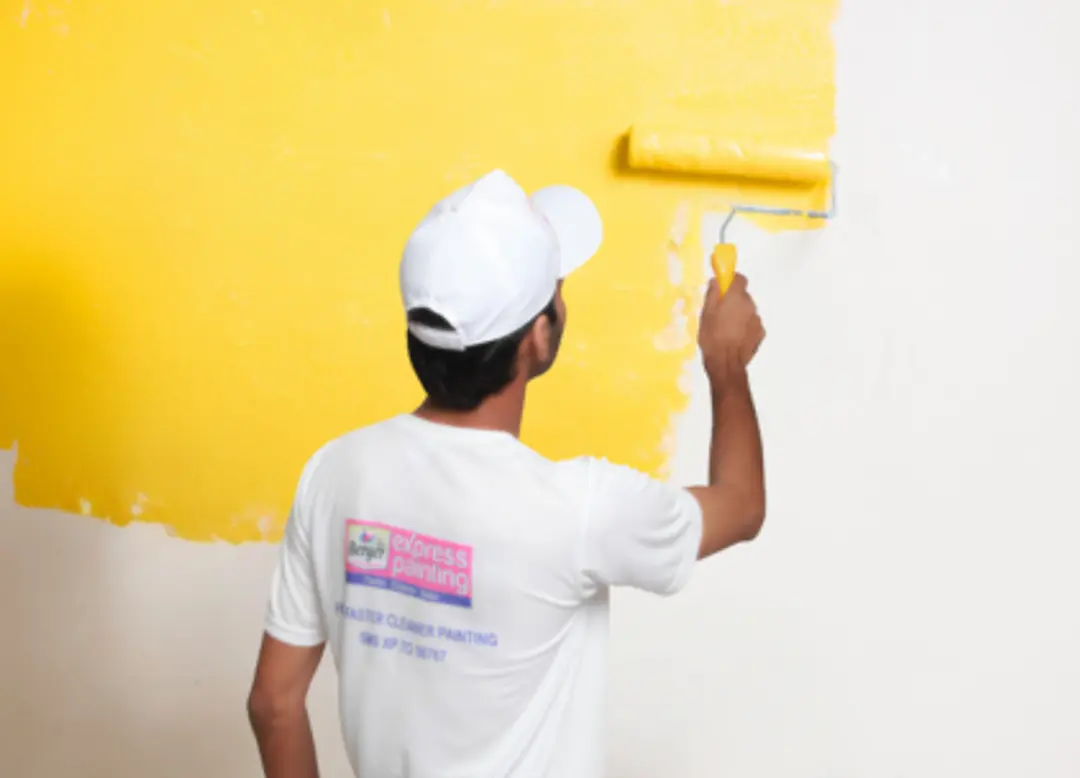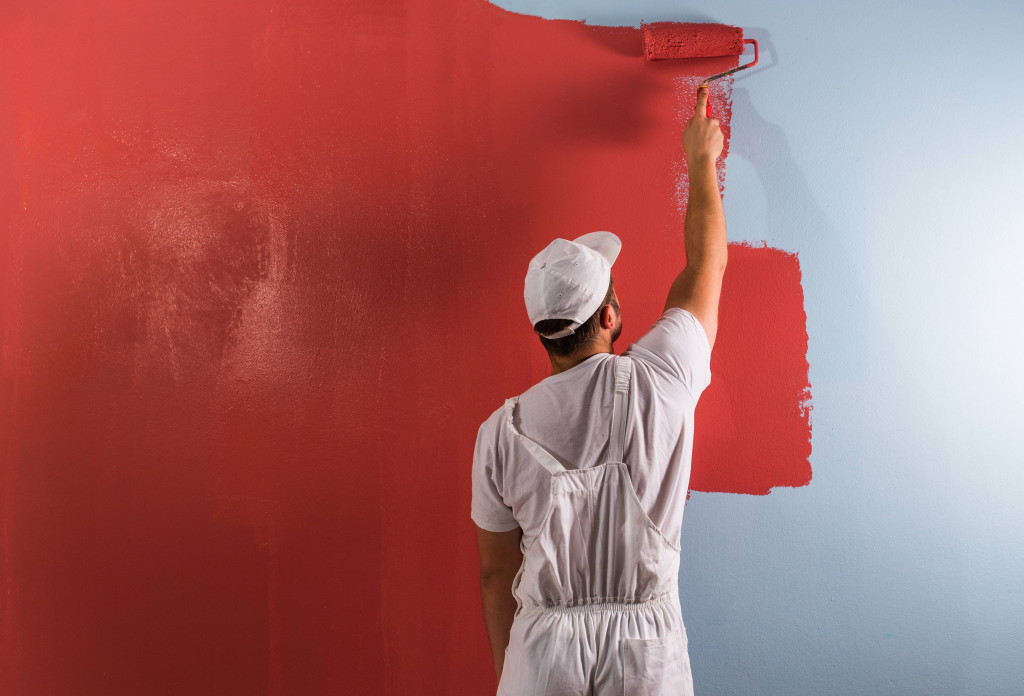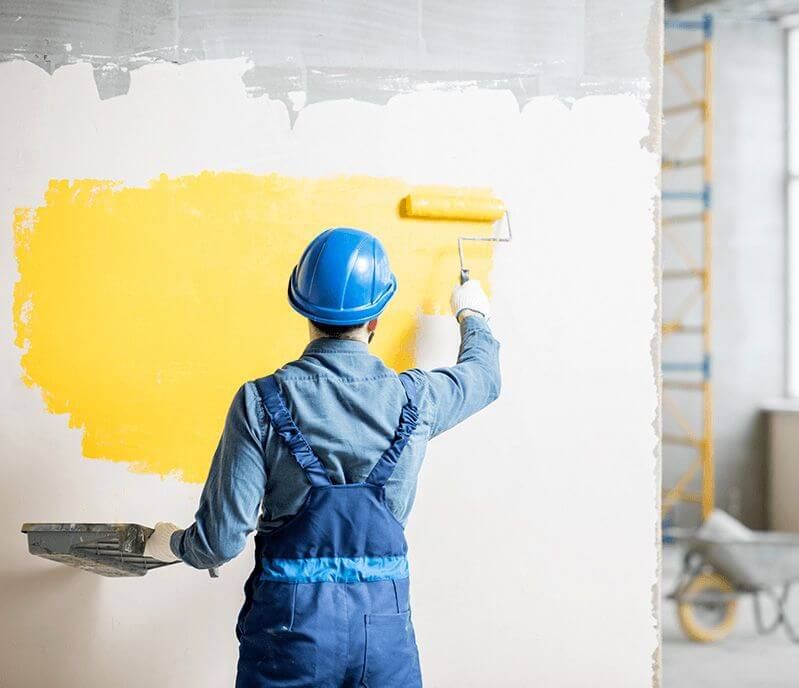Remain Ahead With New Paint Trends: Mixing Methods for Modern Interiors

The Increase of Shade Gradients in Interior Decoration
As designers progressively look for cutting-edge means to enhance rooms, the surge of color slopes in interior design has actually amassed considerable focus. This technique, characterized by the smooth shift between 2 or even more colors, permits for a vibrant aesthetic result that can transform an average room right into a vivid environment. Shade slopes can evoke emotions, influence assumptions of area, and produce centerpieces, making them a functional choice for numerous design styles.
The application of gradients expands beyond walls; they can be successfully utilized in furnishings, fabrics, and devices. Developers typically trying out varying shades to accomplish deepness and intrigue, interesting a variety of aesthetics from minimal to diverse. In enhancement, the adaptability of gradients allows their usage in both industrial and household settings, dealing with diverse clientele. As patterns advance, using color slopes signifies a shift towards more expressive and individualized interior areas, showing private preferences and lifestyles.
Embracing Ombre Methods for a Dynamic Look
Ombre methods have arised as a captivating selection for those seeking to include depth and movement to contemporary interiors. This slope result shifts efficiently from one shade to an additional, producing a visually striking focal point in any kind of space. Developers appreciate ombre for its flexibility; it can be put on walls, furniture, or perhaps attractive accents, permitting distinct expressions of design.
The method works specifically well with soft tones, supplying a tranquil setting, while vibrant shades can invigorate a space. Property owners can experiment with various color combinations, selecting contrasting tones for a remarkable influence or harmonious tones for a subtle impact. The application of ombre is not limited to a single wall; it can expand throughout a space, enhancing the assumption of space and light.
As a modern trend, ombre strategies satisfy diverse tastes, allowing individuals to individualize their insides and accept creative thinking in their layout technique. corpus christi paint store.
Distinctive Walls: Layering Paint for Depth and Rate of interest
Distinctive walls can considerably enhance the visual allure of modern interiors by including deepness and passion. Techniques for producing appearance, thoughtful color combinations, and the right devices for layering are necessary components in accomplishing this impact. Discovering these elements enables a individualized and vibrant approach to interior design.
Methods for Structure Production
Developing visual rate of interest in interior spaces usually pivots on the artful application of appearance. Different techniques can be used to attain this, such as sponging, cloth rolling, and stippling. Sponging involves using a damp sponge to apply a second shade over a skim coat, creating a soft, varicolored impact. Rag rolling, on the various other hand, uses a rolled rag to apply paint, leading to a much more vibrant texture. Stippling employs a tight brush or tool to swab paint onto the surface area, creating a special pattern. In addition, layering various coatings, such as matte and shiny, can enhance deepness. These techniques not only provide aesthetic appeal but also add to the total atmosphere of contemporary interiors, urging a responsive experience.
Shade Mixes for Effect
Layering paint not only improves appearance but likewise opens up a globe of shade combinations that can substantially affect the mood of a room. By mixing complementary tones, designers can develop a harmonious effect that welcomes warmth or coolness, depending on the desired environment. As an example, rich earth tones coupled with soft pastels can evoke a peaceful atmosphere, while vibrant, contrasting colors can include vibrancy and power. Additionally, including glossy or metal surfaces within the layers can present a dynamic aesthetic aspect, capturing light and improving the deepness of the color pattern. Eventually, thoughtful shade mixes via layering paint give a chance to share individual style while transforming average wall surfaces into bewitching focal points.
Tools for Layering Result
Various devices are vital for attaining a successful layering impact in paint applications, which can change wall surfaces into bewitching aesthetic experiences. Brushes and rollers are fundamental, with different dimensions enabling for various textures and finishes. Specialty tools like sponges and cloths can develop unique patterns and deepness, while combination blades supply precision for more specified lines. For bigger locations, utilizing a stippling brush can add an elaborate coating. In addition, spray weapons can successfully use multiple layers for a smooth, even coat. Painters ought to additionally take into consideration painter's tape to develop clean edges in between layers. By making use of the right tools, one can efficiently improve the visual allure of insides, making each wall an intriguing prime focus.

The Power of Color Obstructing in Modern Spaces
As contemporary interior decoration remains to progress, color blocking arises as a powerful method that can change areas with bold visual impact. This method involves the calculated positioning of contrasting shades to create defined zones within a room, improving both the visual appeal and performance of the room. corpus christi tx paint shop. By utilizing big swathes of shade, developers can assist the eye and emphasize building elements, causing a vibrant environment
Shade stopping is not restricted to walls; it can also be put on furniture and decoration, permitting limitless customization. As an example, pairing a vibrant color with a neutral tone can produce a striking focal point while maintaining equilibrium. This strategy encourages imagination, making it possible for house owners to reveal their individualities via distinct color combinations. Eventually, shade blocking serves as an effective way to revive contemporary interiors, making rooms really feel fresh, energetic, and visually interesting.
Including Metallics for an Extravagant End up
Just how can metallics raise the elegance of modern interiors? Metal surfaces work as a striking focal point, adding deepness and visual passion to rooms. They can transform a common area into a sophisticated hideaway with the subtle interplay of light and reflection. Developers usually recommend incorporating metallics in accent walls, ceilings, or furnishings to develop a luxurious atmosphere without overwhelming the room.
Numerous metallic shades-- such as gold, silver, and bronze-- offer versatility, permitting homeowners to customize their visual. For example, a soft gold can give warmth, while a smooth silver can offer a contemporary touch. When combined with neutral tones, metallics improve the total style, giving an advanced contrast that attracts the eye.
Including metal paint right into trim or moldings can also elevate architectural information, creating a refined surface. Eventually, the strategic use of metallics can infuse modern-day interiors with glamour and improvement, making them absolutely charming.
Imaginative Use of Stencils for Distinct Patterns
Changing wall surfaces with patterns can instill modern-day insides with distinct character and style. This creative method permits home owners and developers to develop personalized patterns that show individual looks. Stencils can range from detailed geometric layouts to wayward themes, making it possible for a large variety of expressions. By picking different colors, patterns can raise an area's visual charm and act as focal points without overwhelming the area.
Furthermore, patterns are flexible; they can be put on different surfaces, including wall surfaces, furnishings, and also ceilings. This versatility makes stenciling a perfect choice for DIY lovers wanting to improve their space economically. Furthermore, the convenience of application and elimination enables for experimentation, allowing individuals to refresh their design with very little effort. Ultimately, innovative usage of patterns not only changes regular surface areas but likewise supplies an opportunity for self-expression, making them a trending option in modern interior decoration.
Mixing Matte and Glossy Finishes for Comparison
The interplay of matte and glossy finishes can develop a striking aesthetic dynamic in contemporary interiors. Designers typically use this contrast to improve building features and specify spaces. Matte surfaces, with their soft, non-reflective quality, can create a feeling of heat and intimacy, making them suitable for walls and larger surfaces. In comparison, shiny finishes mirror light, including vibrancy and depth, making them appropriate for accents such as trim, moldings, or furniture.
The combination of these structures can guide the eye and emphasize centerpieces within an area. Combining a matte-painted wall with shiny cabinetry can produce an advanced balance. Furthermore, the careful application of both surfaces can stimulate various moods while enhancing the general visual. As home owners increasingly seek individualized areas, mixing matte and shiny finishes supplies a flexible technique to achieving modern elegance and visual passion in interior decoration.
Often Asked Questions
What Tools Are Best for Blending Paint Strategies?
A selection of devices are excellent for mixing paint strategies, consisting of foam rollers, brushes with soft bristles, sponge applicators, and airbrushes. Each device provides special results, enhancing the mixing procedure for various creative applications.
How Can I Fix Mixing Mistakes?
To fix mixing mistakes, one must lightly sand the damaged location, use a primer if needed, and after that thoroughly reapply paint get more info utilizing a soft brush or sponge to attain a smooth change and bring back the preferred impact.
Are There Particular Paint Brands Recommended for Blending?
Several paint brands are recommended for blending, including Benjamin Moore, Sherwin-Williams, and Behr. These brands use premium surfaces and a broad range of colors that facilitate smooth changes and reliable mixing techniques in various interior projects.
Can I Blend Paint Without Professional Aid?
Yes, blending paint without professional aid is feasible. With method and the right tools, individuals can achieve preferable results. Numerous online tutorials and guides can help in understanding mixing strategies for personal tasks.

For How Long Does Blended Paint Last on Wall Surfaces?
Blended paint can last anywhere from five to 10 years on walls, depending upon aspects such as the quality of paint utilized, surface area preparation, and ecological conditions. Normal upkeep usually enhances long life and appearance.
As designers increasingly look for innovative ways to enhance spaces, the increase of color gradients in indoor layout has amassed substantial focus. The method functions especially well with soft colors, giving a serene ambiance, while strong shades can stimulate an area. Techniques for creating appearance, thoughtful shade combinations, and the right tools for layering are crucial parts in attaining this impact. Layering paint not just enhances texture however additionally opens up a world of shade mixes that can significantly affect the state of mind of an area. As contemporary indoor layout proceeds to evolve, shade blocking emerges as a powerful strategy that can transform spaces with vibrant visual influence.